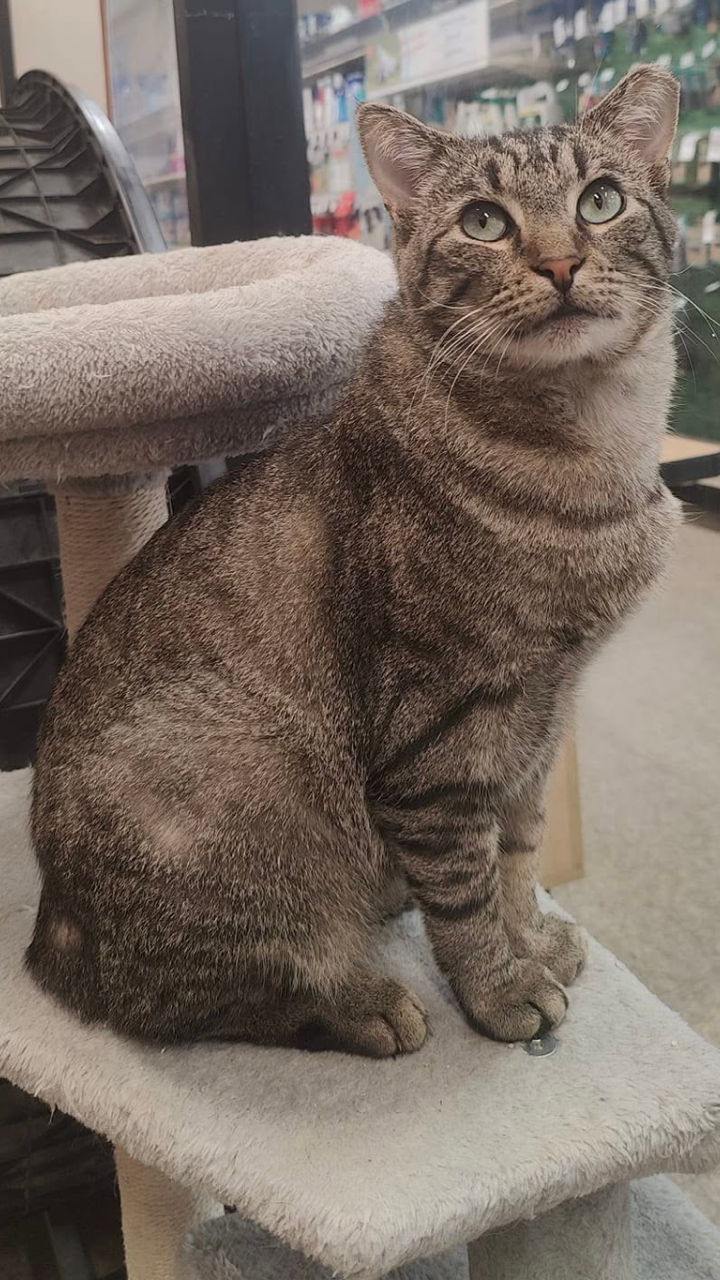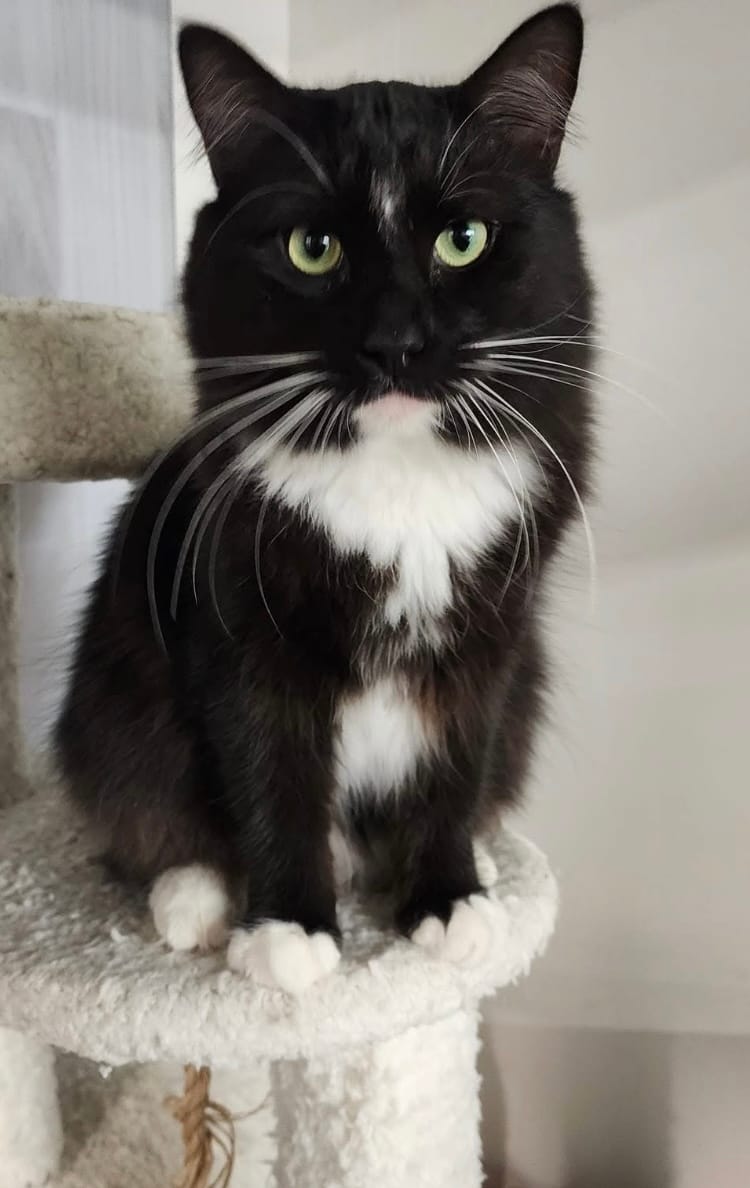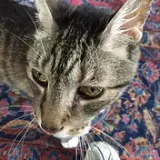Scratch This: Providing for your pets after you die
Even if there's no will, there's probably a way.

Unless you’ve conquered mortality, it’s an absolute guarantee that you’re going to die someday. What you can’t guarantee is that you’ll outlive your pets. As my friend Brandy Gaunt always says about anything pet-related, you need to make a plan for them.
“Every day, without fail, we see on Facebook, ‘Grammy died, and we need to rehome her seven cats by tomorrow,’ not to mention the emails, calls and Facebook messages that the grieving family members send to the rescues needing immediate placement of their loved one’s pets,” Gaunt said. Gaunt is the founder of the nonprofit Jellicle Cats Rescue Foundation, and she knows whereof she speaks.
Rescues, most of which operate by donations, are full and can’t take in everyone’s pets. Even the most well-run public shelter isn’t the best place for a pet—many are already overburdened and understaffed, and there’s no guarantee that an animal won’t be euthanized.
The dogs in the opening photo were surrendered to Long Beach Animal Care Services when their human died. I know you want to know — they did get adopted, and their cuteness and charm as they romped around the shelter grounds no doubt helped in that respect. But shelter behaviorist Chris Hawkes said that those grins would turn upside down when they had to go back to the kennels.
“Please think about your pets before you experience a life-threatening emergency,” Hawkes said. “Establishing an agreement with friends or relatives for temporary care during an emergency or permanent caretaker will ensure your pets safety should you no longer be physically able to care for them.”
Many human roommates have done that. Long Beach residents Rita Silva, Rebecca Salas and Karen Franssen all made arrangements with friends and relatives to take in their pets.
“I can’t imagine how awful it would be to leave them with no future home,” Franssen said.
Setting up an estate
Know first that you’re including your pets in your estate and not leaving money to the them because pets are considered (ugh) property in California.
“This is a potentially complex area of law, and I would not presume to offer advice beyond consult an estate planner,” said Deborah Felin-Magaldi, co-founder of Helen Sanders CatPAWS
If you have one or know one, good. Diana Kliche is both an estate lawyer and an owner of Fix Long Beach, so she’s got a paw in both interests. Kliche advised gifting your pet to an individual and adding funds for the pet’s upkeep.
“A lot of people will gift a sliding scale of monies based on the age of the pets and health of their pets or figure how much they typically spend each year, plus some extra, and give the pet guardian those funds to go along with the pets,” she said. “And have contingencies if [your original caregiver] is unavailable or unwilling.
Kliche also advised that you ask any prospective estate planners what percentage of their clients make after-death provisions for their pets, what gift language they use if the firm ever had estate-planning documents contested, and what the outcome was.
Gaunt and Felin-Magaldi have coverage for their pets on their life insurance policies. If you have one or are thinking of buying one, ask if they have coverage for your pets. This will ensure that whoever is responsible for your pet can handle expenses.
If you don’t have an estate lawyer, get a recommendation for one, and search for tips on planning for your pets. Felin-Magaldi provided a link to a Schwab page, How to Include Pets in Your Estate Plan. The Sandoval Group provides a free webinar and an ebook about estate planning for pets. [Note: neither firm is a recommendation from Long Beach Watchdog or Scratch This!]
CatPAWS cofounder Annelle Baum set up a trust for her cats to go to a sanctuary, but she has concerns.
“They won’t have the same lifestyle as they’ve had with me,” Baum said, and that’s probably true for a lot of our orphaned pets. “I’m just gonna have to outlive them!”
Angels to watch over them
Before you start planning your trust, you need to find someone willing and able to take care of your pets when you’re not around. Debra Goodrich, who fosters several cats and has several more, took in a cat from one deceased neighbor. She scooped up two more when another neighbor died and the family abandoned them. She also has friends and family members who have promised to care for her cats and adopt out as many as they can. (Every neighborhood should have at least one Debra.) I could smugly say that if Goodrich can do it, so can you, but that’s not a consistent reality.
“While most of us agree that the best way to honor a loved one who has left pets behind is to take those orphaned animals in, that isn't always practicable,” Gaunt said. “Even beyond those heartless family members who wouldn't hesitate to dump the animals in parks or at high-kill shelters, there are always the mourners who actually can't — allergies, landlords, houses already full of pets. My own sister is very allergic to cats, and I would not expect her to take in my cats if anything should happen to me.”
The search for a safe landing, on all feet
Pets grieve, too, or at the very least have to make emotional adjustments if you’re not there. They’ll have a better chance of relaxing in a home with people who know you and them, but if there’s absolutely no one in your friend or family circle who can take them in, you have a choice between strangers and a sanctuary. That’s not easy to reconcile, but it’s necessary.
Some veterinarians will help you advertise for an adopter. Maybe yours will. Then, there’s social media. The Humane Society of the United States article Need to Find Your Pet a New Home? offers excellent tips for making your pet “attractive” (in quotes, because you are of course blind to any “faults”). One caveat: look into each applicant to be sure that there are no red flags; and one insistent point: make sure your pets are up to date on vaccinations and are spayed or neutered.
“The majority of rescues will not even have a conversation if your pet is not fixed and vaccinated,” Gaunt said.
See the very end of this column for a link to vouchers and low-cost veterinarians.
Some rescues and foundations will accept pets after the human’s death, although some will want a hefty fee for it and a possible down payment.
“While it may seem heartless for sanctuaries and rescues to charge a fee for placement, we must remember that providing vet care and supplies is not something that any organization can do for free,” Gaunt said. “Caring for these animals, especially long term, can cost thousands of dollars depending upon the age and health of the animal.”
Besides, you can’t take it with you, so why not let your best buddies benefit from it? Frosted Faces Foundation and Purr Manor, a new project of the Zazzy Cats Foundation, have provisions for orphaned pets if the human will pay the fees. The Sandoval firm’s ebook has a listing of rescues and other organizations that may accept your pets. If you adopted your pet from a rescue, the organization may also agree to take your pet in when you die. Be sure that you keep your adoption paperwork, and leave instructions where to find it.
“If [your pet] is a certain breed, reach out to breed-specific rescues and even breed-parent groups on Facebook and Instagram,” Gaunt said.
What if there’s no money, and no one can take your pet?
“There are no magic answers for pets of humans with no resources at all,” Felin-Magaldi said.
For people with resources, both financial and human, it’s only a matter of thwacking them on the forehead with thumb and index finger and telling them to get a plan. But what if you have no money or people to depend on?
Even though it’s difficult, you still need a plan. Use the one resource you do have: your love for your pets.
You can, suggested Felin-Magaldi, contact government or private social outreach and nonprofits. For financial help, Best Friends Animal Society recommends seeking alternatives such as private rescue groups and nonprofits. 2nd Chance 4 Pets, which has a financial assistance resource page, is one such organization. Best Friends also has a partnership with Giving Docs, which helps people create estate documents at no cost and provides an online resource for planning tools.
Public shelters should be a final resort, not just because you can’t guarantee that your pet will get adopted but also because municipal shelters as well as private rescues are already overburdened and understaffed.
“The most important thing, no matter how young and vibrant you are, is to make arrangements for the ones you may leave behind,” Gaunt reminds us.
Good luck to you all. Make your plans for your most-loved friends, and you’ll be more likely to rest in peace.
Yours drooly
Brandy Gaunt is the self-described Matron of Jellicle Manor, which houses the permanent residents and rescues of the Jellicle Cats Rescue Foundation. Jellicle Cats, as the poem tells us, are fastidious, of moderate size (there is an outlier or two at Jellicle Manor), and dance by the light of the Jellicle Moon, except for the ones at Jellicle Manor, who stay safely in the indoor ballroom. Here are a couple who’d love to practice a caper or two in your hall. To apply for adoption, complete this form.

This is Minus–note the stubby tail—and Brandy and her cohorts are quite pleased with themselves about the name. Minus is a biscuit-making champ who loves attention, loves dogs, and loves—well, attention. Don't let this face fool you—he's not nearly as mournful as he looks. He’s just a happy dude with resting worry face. He can be picky about his kitty friends, so he would do well as an only kitty or as a foster-to-adopt with careful introductions to any resident kitties. He's about 2 years old and is neutered, microchipped, vaccinated, and ready to go home.

“Jellicle cats are white and black,” and this fluffy moppet is the jellycotypical Jellicle. His name is Tux, and he’s a little over a year old and the actual center of the universe. Give him a whisker’s length, and he’ll vociferously monopolize the conversation. Tux loves to be brushed, snuggle time on the sofa, and helping you work from home. In fact, he’s an excellent supervisor and is already dressed for the job. He can be, shall we say, mercurial and as such is going to be happiest as an only cat. He's neutered, microchipped, vaccinated and ready to go home.
Tail-waggin’ and nose-boopin’ events
TNR Action, Education and Awareness Group meeting
Are you zealously engaged in TNR (trap/spay-neuter-vaccinate-microchip-release of stray cats) and want to share resources with and get support from an equally committed community? Are momcats having kittens in your neighborhood, and are dadcats yowling at them to make more? Are you on your last shred of yarn trying to figure out what you can do? Get some answers at this grassroots meeting, the first in Long Beach to focus on combining forces to humanely stop the birthing of unwanted kittens in the urban wild. Speakers will include rescues, experienced trappers, and Long Beach Animal Care Services staff members, in particular LBACS cat coordinator Lindsie Merrick.
The group meeting will take place Saturday, Sept. 21, starting at 1 p.m. at the Education Center at Long Beach Animal Care Services, 7700 E. Spring St., Long Beach, at the entrance to El Dorado Park. No parking fee for shelter guests.
Remember Me Thursday
Remember Me Thursday commemorates those pets who waited in shelters for their forever humans. When no one came, their lives ended there. At this time every year, people gather to rededicate themselves to saving all the animals we can. Photos, poetry and readings are shared. Water, candles and cookies are provided. If you cannot join, please light a candle for the lives lost. Find out more about Remember Me Thursday on this video.
Remember Me Thursday takes place Thursday, 6 p.m. Sept. 26 on the sand near the Beach House at 15 1st St., Seal Beach. Look for the candles.
Cool Cat Collective features art shows for hep cats
Long Beach’s newest cat meet-and-greet place is hosting two art exhibits for folks who love cats and use their feline wiles well. Monster Cats are hanging on the walls now, literally clawing them, and will haunt the habitat through Halloween. CLAWSS is a collab-purr-ation with Page Against the Machine bookstore, with works by local artist Stephanie Han. The two stores w p.m.ill each show the hackles-raising art from Sept. 27 through Nov. 11 for cat ladies and those who love them. And the cats, too, of course.
Cool Cat Collective is located at 2741 E. 4th St., unit C, Long Beach. Hours are Wednesday–Sunday, 10 a.m.–5 p.m. Page Against the Machine is located at 2714 E. 4th St, Long Beach. Hours are Tuesday–Sunday, 11 a.m.–6 p.m.
Helen Sanders CatPAWS annual Show Us Your Kitties calendar contest
Time to submit your favorite photos of your favorite pointy-eared people so that they can live on in purr-petuity, or at least through 2025! Helen Sanders CatPAWS’ annual contest raises funds for medical bills and food for CatPAWS rescues, and it also helps power the rescue’s spay/neuter mobile van. This year, the goal is to reach $10,000, which will be used to continue the lifesaving work they do in our community and beyond. Follow the instructions on the link to enter your cat. The top three submissions will be offered a personal sketch of their photo! Because every dollar counts and to encourage people to share their beloved kitty photos, CatPAWS has waived the entry fee this year! The organization will strive to put every photo on the calendar, whether they’re top 12 or not. You can even reserve a special day for a thumbnail on your calendar: a birthday, a “gotcha” day, or a memorial to a beloved cat for $15 a space. So go ahead — show us those kitties! We know you want to!
Follow this link for instructions to enter the Show Us Your Kitties calendar contest. Entries may be submitted until 11:59 p.m. PDT on Monday, Sept. 30. Voting ends Tuesday, Oct. 1 at 9:00 p.m. PDT.
Need a low-cost veterinarian, information about trapping community cats, places to volunteer — anything pet related? Follow this link for resources. Please add your own ideas in the Comments section.

We need your support.
Subcribe to the Watchdog today.
The Long Beach Watchdog is owned by journalists, and paid for by readers like you. If independent, local reporting like the story you just read is important to you, support our work by becoming a subscriber.





